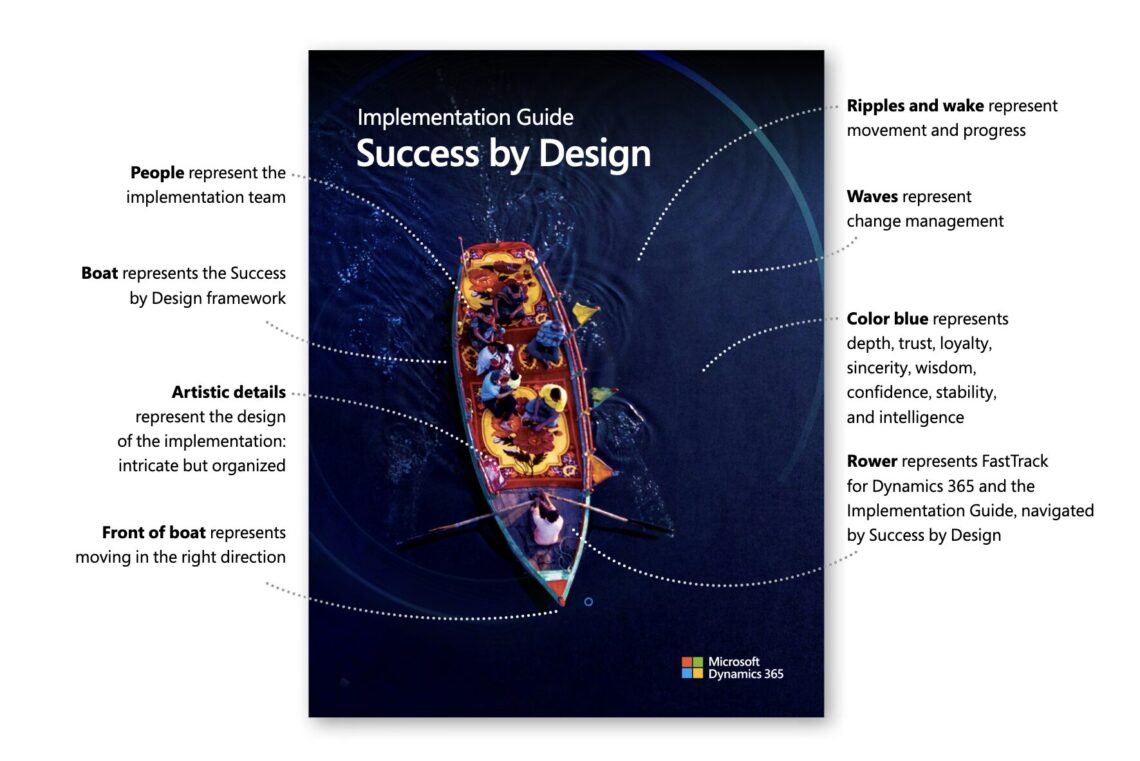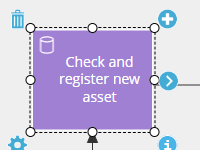
Dynamics 365 Implementation Checklist

Embarking on a Dynamics 365 implementation requires a strategic shift towards agility and accelerated value delivery. Traditional long-term, waterfall-style projects are no longer suitable in the fast-paced cloud services environment. Instead, organizations should focus on quickly leveraging functional areas of the application that can bring immediate business value and then expand and enhance from there. This article summarizes the main recommendations from Microsoft’s ‘Success by Design’ implementation guide, which underpins their ‘FastTrack’ programme.
Table of contents
Looking for something else? See these related links:
- Process improvement process steps: An introduction
- Lean process improvement: Removing the waste
- Consultant? How to help your clients to digitalize operations with Gluu
- Makigami – the method for making the unknown known for process improvement
- 7 selected process improvement videos
Worth noting:
Every organization faces unique challenges and opportunities. However, this checklist provides the guidance and resources needed for a successful Dynamics 365 implementation, regardless of your stage in digital transformation. The guide helps you leverage data for actionable insights and optimal business outcomes.

1. Phase: Strategy
In the initial phase, the primary goal is to establish a clear direction and thoroughly understand the requirements for a successful implementation of Dynamics 365. Utilize the following points to gain a comprehensive understanding of your organization’s needs and translate those needs into a well-defined strategy.
Adopt a Cloud Mindset
As you embark on a Dynamics 365 implementation, ask yourself why you’re doing it: is it just a system upgrade, or an opportunity for digital transformation to advance your business model and outpace the competition? Identifying the value you aim to drive with business applications is crucial—will the technology and your implementation vision get you there? Embracing a cloud-first mindset and understanding the power of data are essential for achieving digital transformation.
Operation
Successfully operating in the cloud drives business value, requiring the right skills and change management processes. Creating a Center of Excellence (CoE) is crucial for managing the platform, maintaining custom components, and implementing new features. Microsoft’s CoE starter toolkit helps administer, govern, nurture, and drive innovation while ensuring consistent application lifecycle management and organizational standards.
Change Stream
Developing a digital transformation plan traditionally starts with the business model and narrows down to impactful processes and applications. Embracing constant change and planning for it is crucial for success. Agile methodologies help accommodate adjustments during design and implementation, ensuring flexibility and responsiveness. User-centric design, incorporating continuous feedback, is essential for achieving transformation goals and adapting to evolving user expectations.
Transformation Roadmap
“MVP is not the smallest product imaginable, though it is the fastest way to get through the build measure learn feedback loop with minimum amount of effort.”
Eric Ries
Creating an effective MVP (minimal viable product) strategy accelerates value realization. To maximize business impact and time to value, define your transformation roadmap with structured phases. Incorporate expansion models into these phases, and adopt the latest capabilities to ensure continuous business innovation.
2. Phase: Initiate
In this second phase of the implementation process, the focus shifts towards the importance of process mapping, project governance, and setting the right goals.
Business Processes Focus: an opportunity for optimization
Adopting a business process mapping approach ensures consistency and enhances communication in Microsoft Dynamics 365 implementations, emphasizing continual improvement.
This involves:
- Center the project definition around the business process view.
- Use business processes in each project phase for better outcomes.
- Clearly define key business processes and respective personas.
- Incorporate business model analysis, process engineering, and standardization.
- Ensure future readiness with configurable process mapping.
Examples of features to succeed with business processes

Simple process mapping
Map using five basic shapes for easier understanding by end users.

Create work instructions and SOPs
Add text, images, video, links and files to any activity in any process. This lets you show why and how work is done.
Project Goals, Organization & Approach
Set clear, realistic, actionable, and measurable goals. Make sure to align said goals with stakeholder sponsorship and team understanding. Confirm that the chosen implementation methodology aligns with project constraints.
Governance and Control
Governance is critical for the success of system implementation projects like Dynamics 365 applications, particularly due to their complex impact on business processes and people. Effective governance ensures alignment of business requirements, methodologies, and governance models to support and drive project outcomes.
3. Phase: Implement
We have now entered a critical phase: the actual implementation. By meticulously managing your data and security measures, adhering to your ALM strategy, and rigorously testing your solutions, you are positioning your organization for a successful Dynamics 365 implementation.
Data Management
Using the right data the right way allows an organization to make informed decisions. The aim is to ensure that relevant and necessary information can be accessed by the application’s end users, regardless of their roles and needs.
Make sure to implement good data practices:
- Data Governance and Architecture (establish principles and good practice).
- Data Modeling (Common Data Model standard).
- Data Storage (estimate and forecast needs)
- Data Migration (make a plan)
- Data Quality (implement validations and control)
Application Lifecycle Management (ALM) Strategy
Establishing an ALM strategy will ensure that your Dynamics 365 implementation sets you up for success and helps grow your business.
Privacy, Compliance, and Security.
Make sure to obtain a thorough understanding of your responsibilities as a user, the provider’s responsibilities (Microsoft), and the shared responsibilities.
Analytics, Extend, and Integrate:
- Align your analytics and reporting strategy with the general implementation plan
- Ensure that any extensions add real value and validate their performance and scalability
- Align integration designs with the overall architecture of your Dynamics 365 implementation.
Planning and Testing
To avoid costly challenges and delays a proper testing strategy is defined. The success criteria for the testing strategy is to ensure that the solutions meet the organization’s needs and allow for successful operations.
👉 Recommendation: Prioritize an agile approach when implementing Dynamics 365. Begin by identifying and leveraging key functional areas that provide immediate business value. This strategy allows for quick wins, continuous adaptation to changing business needs, and fosters faster user adoption and long-term success.
4. Phase: Prepare
Training Strategy
To ensure optimal preparedness it is essential to define a training strategy. The main objective of your training strategy is to ensure that all users receive adequate training to complete their work tasks within the new application.
A good training strategy addresses the following aspects:
- Make the training effective in a non-overwhelming manner
- Make sure all users understand the “why” behind the usage of the applications (supports business goals)
- Continue the training post-go-live to ensure the desired user adoption
Go-Live Readiness
We are approaching the end goal: go live. Do you have the necessary go-live readiness? Have a look at this checklist (combined with everything mentioned in the previous phases. Everything eventually points towards go-live readiness!)
- Conduct early and frequent quality gate reviews of your solution.
- Align and sign off on solution scope with stakeholders (does your solution meet your organization’s needs?)
- Complete and sign off on all test cycles (system integration, performance, UAT).
- If relevant, align ISVs and third-party services with go-live timelines and scope.
- Prepare production environment and familiarize IT with monitoring and troubleshooting.
- Create a detailed cutover plan with dependencies, roles, and verification steps. Test and sign off on cutover migration scripts and processes.
5. Phase: Operate
Congratulations! Your solution has now been deployed and the users have received the appropriate training. So, now what?
Although Dynamics 365 is a SaaS solution and thus maintained by Microsoft, certain responsibilities rest on the shoulders of the user:
- Monitor service health (enable your team to troubleshoot issues)
- Familiarization with updates (Microsoft provides early access that enables users to test new features and changes in advance)
- Your role as the system administrator: many tasks can be automated. However, certain tasks, such as managing user correct access typically require manual intervention.
- Take full advantage of all (new) features: continuous education is the key to finding new and better ways to meet your business objective.
At the same time, you are now transitioning from project mode to support mode, which means you need to define your support strategy.
Carefully consider the following aspects:
- Establish reference architecture and daily support procedures.
- Create a support charter detailing tasks and responsibilities.
- Schedule regular maintenance and updates.
- Define hours of operation and service requirements.
- Determine necessary support tools.
Most support organizations use internal helpdesk software to manage IT service requests, including Dynamics 365. Here it is key to consider new internal and external resolving authorities.
Conclusions
In the fast-paced world of cloud services, adopting an agile approach to Dynamics 365 implementation is essential. By focusing on early value delivery and continuous adaptation, organizations can accelerate user adoption and harness the full potential of their digital transformation efforts. This strategic checklist, inspired by Microsoft’s “Success by Design,” provides a comprehensive framework to guide your journey. It takes you through the full process starting with the right mindset all the way to establishing an optimized support strategy post-go-live. By embracing agility, ensuring strong governance, and prioritizing continuous improvement, your organization will be well-positioned to optimize business processes, enhance efficiency, and maintain a competitive edge in the digital landscape.
Frequently Asked Questions
Adopting a cloud-first mindset is crucial for leveraging the full potential of Dynamics 365 as it encourages organizations to think beyond just upgrading their systems. It emphasizes digital transformation, which can significantly advance business models and provide a competitive edge. This mindset encourages the strategic use of data and modern cloud capabilities to drive better business outcomes and ensures that the technology supports the organization’s vision for growth and innovation.
Effective governance is critical for the success of a Dynamics 365 implementation because it ensures that the project aligns with business requirements, methodologies, and governance models. Proper governance facilitates better decision-making, resource allocation, and risk management. It helps maintain project focus and direction, ensuring that all stakeholders are aligned and that the implementation delivers the desired outcomes efficiently. This approach minimizes disruptions to business processes and enhances user adoption and overall project success.
Ensuring a successful go-live involves several critical steps. First, conducting early and frequent quality gate reviews of the solution is important to identify and resolve any issues ahead of time. It’s crucial to align and obtain sign-off on the solution scope with all stakeholders to ensure that the solution meets the organization’s needs. Completing and approving all test cycles, including system integration, performance, and user acceptance testing (UAT), is vital for validating the solution’s readiness. Coordination with ISVs and third-party services should be done to align with the go-live timelines and scope. Preparing the production environment and familiarizing the IT team with monitoring and troubleshooting processes will ensure operational readiness. Additionally, creating a detailed cutover plan outlining dependencies, roles, and verification steps, and testing and signing off on cutover migration scripts and processes, will help mitigate risks and ensure a smooth transition to the new system.



